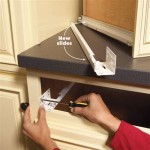Composting is quickly gaining popularity as a way to reduce waste and help the environment. Compost buckets for the kitchen are a great way to make composting easy and convenient for anyone who is interested in doing their part for the planet. This guide will provide an overview of compost buckets for the kitchen, and offer tips on how to choose the best one for your home.
What Is a Compost Bucket For Kitchen?
A compost bucket for kitchen is a container specifically designed for collecting food scraps, vegetable peels, coffee grounds, and other organic waste for composting. It’s typically made of durable plastic or stainless steel, and features a lid and handle for easy transportation to an outdoor composting bin. Compost buckets for kitchen come in a variety of sizes, making it easy to find one that fits your specific needs.
Benefits of Using a Compost Bucket For Kitchen
The most obvious benefit of using a compost bucket for the kitchen is that it allows you to easily and conveniently collect your food scraps, vegetable peels, coffee grounds and other organic waste for composting. This can be especially helpful if you don’t have an outdoor composting bin, or if you simply don’t have the time or energy to transport your scraps to it each day. Additionally, composting your food scraps helps keep them out of landfills, which can help reduce the amount of waste that is sent to landfills each year.
Composting can also help reduce your overall waste output. By composting your food scraps, you can reduce the amount of plastic and other packaging waste that you produce. This can help reduce your carbon footprint, as well as help to reduce the amount of energy and resources that are used to produce and transport these materials.
How to Choose a Compost Bucket For Kitchen
When choosing a compost bucket for the kitchen, there are a few things to consider. The first is size. Depending on how much organic waste you produce each day, you may need to choose a larger bucket to accommodate it all. Additionally, consider how often you plan to empty the bucket. If you’re only composting once a week, you may want to opt for a smaller bucket that can be emptied more frequently.
You’ll also want to consider the material the compost bucket is made from. Plastic is generally the most affordable and lightest option, but stainless steel is more durable and can be easier to clean. Finally, consider the design of the lid and handle. You’ll want to make sure that the lid is secure, and that the handle is easy to grip and transport.
Conclusion
Compost buckets for the kitchen are a great way to make composting easy and convenient. They come in a variety of sizes and materials, making it easy to find one that fits your specific needs. When choosing a compost bucket for the kitchen, consider size, material, and design to ensure that you choose the best one for your home. With the right compost bucket for the kitchen, you can easily and conveniently collect your food scraps and other organic waste for composting.















Related Posts








